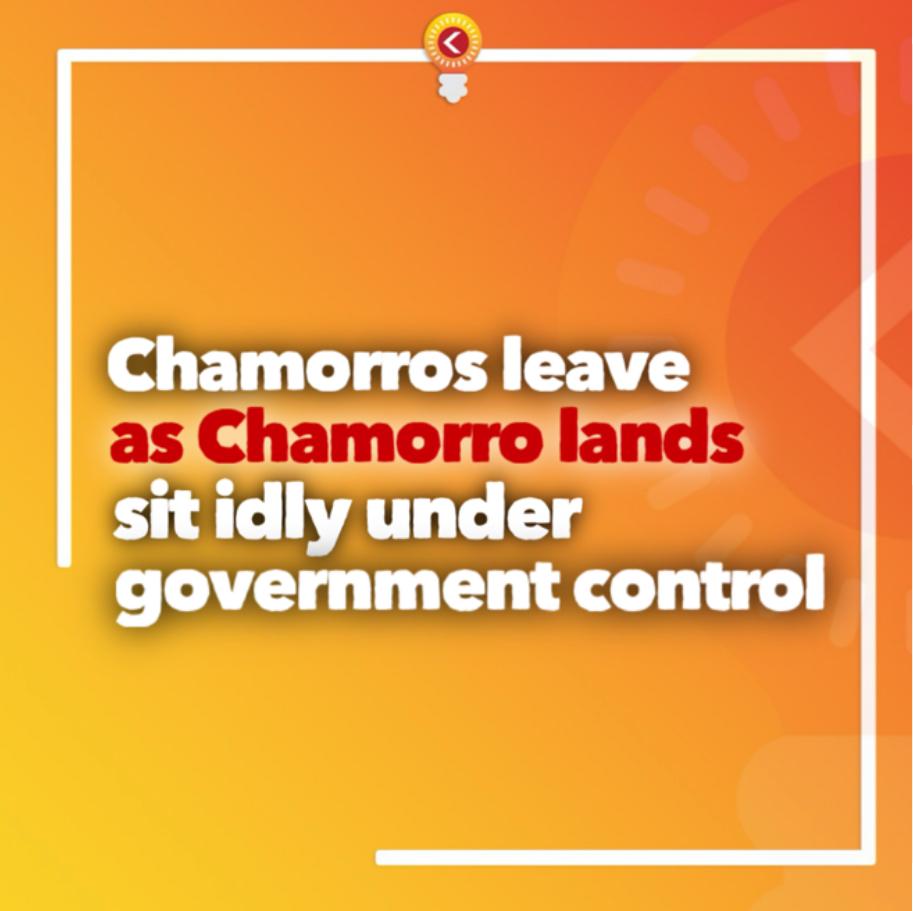There is an irony juxtaposing the good intentions of the Chamorro Land Trust Act and the current exodus of Chamorros from their own land:
As CLT lands – about one-fifth the land area of Guam – sit idly in the possession of the government, the Chamorros those lands were supposed to benefit are leaving Guam because they’ve been priced out of paradise.
The irony – the reality – should be criminal.
And for as much as it was intended to be a Chamorro-only program, let’s face it; those lands can be used to make affordable homeownership a reality for all Guamanians.
Whenever I hear about a Chamorro who relocates, my heart is heavy but hopeful, believing natives will at some point come back home. But, I am nearly heartbroken when I hear of non-Chamorro Guamanians who – after making Guam their home and investing so much here – leave because there is nothing left for them to survive financially with their families. The chances of them coming back ‘home,’ simply are slimmer.
I love us all, who call Guam home. All my Rotanese, Tinianese, Saipanese, Filipino, Chuukese, Palauan, Marshallese, Yapese, Kosraean, Ponapean, Indian, Caucasian, Korean, Chinese, Japanese, Black, European, Latino brethren of this Pacific paradise.
Since the pandemic, every one of my boyfriend’s friends have relocated to either California, Japan, or the Philippines. All of them are Filipinos who either were born on Guam, or have been here for decades.
Over the past year, several gym friends whom I’ve known for years have moved to the Philippines or the continental United States. Two of them opened businesses in Manila.
Last week, the exodus became very personal. My niece – my brother’s daughter – told me she’s leaving Guam with her daughter – my brother’s only grandchild. I am heartbroken.
But we can’t pretend like we don’t empathize with these decisions. We are paying the same extraordinary prices for taxes, groceries, electricity, gas, and rent.
The cost of housing is the largest among these expenses, and what will make the difference between homelessness and exodus.
Meanwhile, about 20,000 acres of land that can be developed into affordable housing opportunities just sits under the control of an agency paid by the taxpayers to sit on all that land.
This means 40,000 families could have the chance to build homes on half acre lots if that land was released. Or, 80,000 homes could be built on quarter-acre lots. The point is, there is more than enough land for the Chamorro people to share in opportunity with our Guamanian brethren, and with opportunity at that scale, development could significantly drive down the cost of homes and rentals.
The Chamorro Land Trust Act of 1975 placed almost all of the land under the government’s control under the Chamorro Land Trust Commission to distribute by 99-year lease to Chamorros. The commission was not operable until the late Angel Santos led an effort, and Carl Gutierrez – then governor – appointed the first CLTC in 1995.
Mr. Gutierrez began the leasing program, providing hundreds of Chamorros with land for their homes and farms. As allowed by law, some of the land was leased to businesses at higher rates, providing the CLTC with revenue it was supposed to invest and use to develop lots that needed to be surveyed, and that didn’t have power and sewer lines.
And then, politics. The CLTC finally began to get on track when businesswoman Pika Fejeran ran its board. But, shortly into her first term, Lou Leon Guerrero took Ms. Fejeran off the board.
And the Chamorro land still sits as the Chamorro people leave to another land.
Through the Camacho and Calvo administrations, a handful of developers used federal tax credit programs administered by the Guam Housing and Urban Renewal Authority to build thousands of new homes, many of which were purposed as low-cost rentals. Had it not been for that effort, many of us would be reading this article online from somewhere other than Guam.
Why can’t GovGuam – WHICH HAS THE LAND IN ITS INVENTORY – enlist developers with like incentives to develop Chamorro Land trust lands?
What about the repurposing of underdeveloped CLTC commercial properties? Clearly, large tracts of already-leased land are just sitting. Can the commission become creative and find ways to develop these into affordable housing communities? Or schools surrounded by homes? Or at the very least solar panel farms that can lower electricity costs?
A proposal by Chris Duenas in the Guam Legislature provides some hope. His legislation essentially will authorize a clean technology that will allow for people to build homes where the current law forbids development. And that provides an open door for housing development in the north, where the majority of Chamorro Land Trust lands are just sitting undeveloped.
Mr. Duenas’ proposal is a key to a door with many locks. That door is GovGuam. It can either keep people out, or let us in. Guam’s leaders just need to pick the locks.
There is a lot of opportunity for GovGuam – which owns this land – to help lower the cost and ancillary costs of homeownership.







1 Comments
Kc
10/05/2023 at 2:33 PM
I only returned to help Parents, the way it is , I wont be able to afford a home.. Same as when I lived in Hawaii.. I will leave Guam after parents..